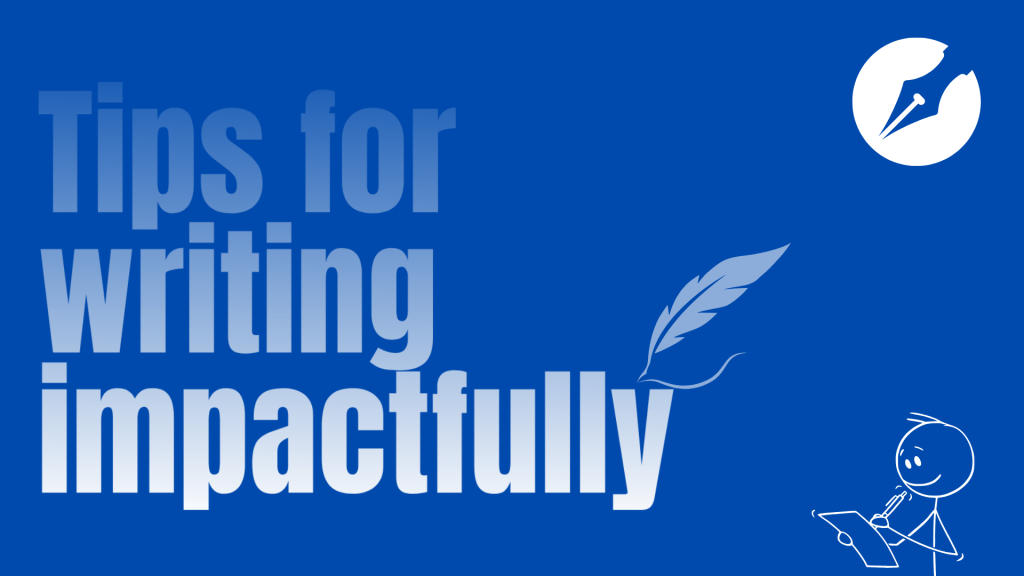
How to write & win hearts?
Are you a writer? That’s a vague question. We all have to write every day. From emails, text messages, to reports and stories. We write because it is the most accessible form of expression, second only to speaking. Writing has an ancient history, spanning thousands of years. The person who can write can express, direct, and demonstrate clearly.
Writing is a powerful tool that can illustrate, paint, and make an impact – imagine all those novels and stories you have read. Successful writers can compile and build worlds with letters and punctuation.
Is it something we are born with? A discrete talent? Or something we can develop gradually through practice, and in time, gives us the blessing of clarity and effective communication? The answer is both. Some people around us may inherit the power of writing as a born talent, while others may develop it through spending time in practice. However, no matter how good a writer you are, there is a commonality that requires you to step into your target audience’s shoes and write in a way that makes sense to the readers. Your imagination does not come alive until someone reads it and resonates with your way of delivery. That is something we need to learn, practice, and give time to nurture until we achieve clarity and find our write-ups to be comprehensive to the intended readers.
Nowadays, writing does not follow old-fashioned theories, such as the inverted pyramid or plain narrative models. With the evolving media landscape, writing patterns have changed as well. We need to write in a way that we are having dialogues with the audience, instead of following the old trends that only bring information and interpretation to the table.
Here are some tips and tricks that will make your writing more savory for your readers:
- Chalk out a plan, an outline: This is very crucial in your storytelling. Think, create an outline. It’s just like a painter who draws a pencil outline to develop a plan to realize their imagination. A clear outline will help you avoid getting carried away while writing the story. You’ll also see a clear pathway to convince the people you are writing for. There’s a popular theory that has helped public speakers to tell their stories compellingly for a thousand years. Let’s explore that briefly.

- Ethos: Ethos ecos ethics, leading to the very character who is writing the story. You need to establish first why you are the right person to tell the story. Or you can also define your readers and establish why the article should resonate with them. For example, head back to the first paragraph to see a real demonstration.
- Logos: Logos refers to the knowledge and information you are sharing. Make sure it’s comprehensive and clear enough so your readers find the promised value you projected in the headline and intro.
- Pathos: It indicates the emotional appeal you make through your story. Explain the background elements mixed with emotion, with both words and stories.
Which order should you follow while compiling a write-up with planned ethos, logos, and pathos elements? Well, you can follow your heart for this. It’s not necessary to be rigid with these appeals. You can mix and match, play around, and see what works for you. However, there is an order that enables a storyteller to make the most impact. It is very simple. Start with ethos, establish yourself, and your intended characters to build credibility. Then tell the story through logos. At the conclusion, to make it more memorable and convincing, pull out the emotional card, pathos.
- Give it a KISS: KISS refers to keeping it short and simple. Use economical words. If two words tell the tale, do not unnecessarily extend it.
- Use of common words: This is a struggle that most academic writers face. You may have a wide array of vocabulary that supports you to play around and make your story more expressive, but your audience may not. Do not belittle them with overwhelming words and make them rush to the dictionary.
- Keep reading and listening: To write better, you must read better. The more you read, the more you’ll adapt to a better writing style and tell your story more compellingly. How does it work? Our brains identify and become accustomed to patterns when we are exposed to them frequently. Writing and storytelling are patterns as well. Imagine you are reading an exciting novel that depicts the transformative journey of a procrastinator to becoming an active social hero. You’ll feel a change in yourself, and at some point, start imagining yourself as the protagonist with a dreamy vision. You’ll wonder how you would become that version of yourself. This is theoretically defined as catharsis. However, other functions, which are comparatively less loud and subtler, also occur in the brain. You may find yourself writing in a new way or speaking differently than you did before. These slight changes impact your day-to-day delivery to a significant transformation when you discover yourself as a far better writer than before. The same thing applies to listening. The more you listen, the more you get accustomed to better ways of storytelling, and discover rhetorical idioms that create fun in reading.

There is a theoretical approach that is particularly relevant to this matter. You need to have a bifocal mind that scans and corrects your written piece both technically and conceptually. I will explain it to you step by step.
At first, draft what you want to say, then edit the piece to look for technical mistakes, such as grammar, spelling, sentence structure, and clarity. Make the edits.
Secondly, scan the write-up conceptually to find how much it reflects what you wanted to say. Make the changes thoroughly and move on.
The third step is to scan it as content. Ask yourself, would I read this if I were my audience? If not, make the edits and continue until you are satisfied.
At the final stage, publish it. Collect feedback from your audience. Evaluate your approach according to comments that seem logical and relevant. Keep changing, applying, and trying. Voila! After a few weeks, you’ll rediscover yourself as a writer with clarity and style.
The most important thing is maintaining a constant and frequent pace. Keep writing more and more. Want to accompany me in this journey of getting better each day? Follow my socials to get regular updates. Together, we can make it!

